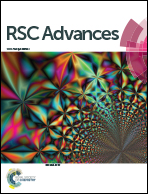A novel experimental device for electrochemical measurements in supercritical fluids up to 700 °C/1000 bar and its application in the corrosion study of superalloy Inconel 740H
Abstract
A three-electrode electrochemical study concerning electrically conductive materials submitted to supercritical fluids above 550 °C has not been reported in spite of its significance in many related fields. In this work, the design of a novel experimental device allowing three-electrode electrochemical measurements in high temperature and pressure fluids up to 700 °C/1000 bar is detailed described. In this device, pyrophyllite is used as a new electrode sealing material and the electrodes are sealed using a conical self-energizing sealing structure, which ensures the water tightness of the electrodes at pressures up to 1000 bar. The reference electrode in this device can either be an Ag/AgCl external pressure balanced reference electrode (EPBRE) or a platinum reference electrode. The potentiodynamic polarization plots and electrochemical impedance spectroscopy (EIS) of nickel-based superalloy Inconel 740H, a candidate material for Generation IV nuclear reactors, in deaerated water and chloride containing fluid (600–700 °C, 600–1000 bar) are presented using this device.



 Please wait while we load your content...
Please wait while we load your content...